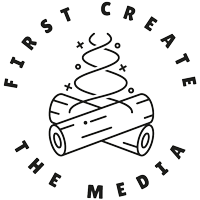‘Boring Comms Waste Lives’ is my new mantra. Hours of human life are being wasted sitting through boring presentations or listlessly turning the pages of indigestible reports.
More importantly, if your biomedical research, product or company could save lives but people are so bored by your communications that you can’t get the funding you need to proceed, your communication efforts will not only be a waste of time, they will cost lives too.
Trouble is, right now the coronavirus pandemic means we’re all having to present and pitch our ideas over flaky video calls at a time when everyone’s concentration spans are shot to pieces, making it even harder to get and keep attention.
There’s plenty of great technical advice out there already about how to improve your video calls, from lighting and sound to framing your face properly in the screen and choosing the best background. (Bookcase for credibility, yes? Or maybe not…)
But what about the actual content and delivery? If you think you can just repurpose your regular in-person presentation deck, think again. The unique challenges of video calls mean that it’s all too easy to leave your listeners confused or – worse – bored.
Try these tips to get your presentations and pitches to sparkle, both online and back in the ‘real world’ (when we get there…)
Think first: what’s your message?
Don’t just open a blank document or slide deck and start typing. Spend time thinking about the message first. Who is your audience and what’s the one most important thing you want to get across to them? How do you want them to feel and what do you want them to do?
And yes, it does just have to be just one key message: you’re competing with emails, the kids, the dog, social media and everything else for your audiences’ attention. Ain’t nobody got enough mental bandwidth for more than one point at a time right now.
Get your story straight
Humans are narrative creatures, and we most easily follow stories that have a clear beginning, middle and end. Memorable stories have a turning-point action (something happened/happens that changes the situation along the way), identifiable characters (which can be people, objects or concepts like a disease), and leave the listener with an emotional aftertaste (happy, sad, angry, curious, inspired…?) that spurs them on to action.
Read more about how to shape your story in this blog post.
Keep it simple, scientist
I know it’s hard to leave out any of those delicious details and data from your presentation, but the more facts and fine details you include in your presentation, the harder it is to keep your listeners’ attention, especially on video calls when there are so many ready distractions. And it helps to keep it short and snappy too.
Pick your ‘diamond details’
Focus on the specific, distinctive details that really highlight the key points of your story and make it memorable and leave out anything that’s irrelevant to the immediate storyline. If your audience is interested and curious, they’ll ask for more – and remember, too many diamonds just look like sand.
Project your personality
If you’re not a confident public speaker at the best of times, video calls are not your friend. There’s something about the small screen, tinny speakers and stuttering connection that saps the energy out of even the most accomplished speaker.
It feels weird at first, but if you’re giving a presentation online imagine you’re speaking to a real person sitting about 6 feet behind your phone or computer, rather than just mumbling into the webcam. It can also help to put your device on a shelf and stand up to get a bit more energy going.
Ditch the crutch
Many presenters end up leaning on boring, cluttered text-packed slides to compensate for the fact they haven’t spent enough time preparing their talk. It takes time to deliberately and intentionally think about your message and your story and to prune it down into a memorable, sparkling format. You might even want to enlist some professional help for an important pitch or high-profile talk.
Get creative
And finally, use the constraints of video calling to get creative. Can you ditch your slides altogether and use some physical props or visual aids like sticky notes to get the message across? Can you get your listeners to do an action or find something to hold that connects them with your story?
The COVID-19 crisis has ripped up the rule book for everyone, so use it to your advantage to communicate your ideas with maximum impact. Get in touch to find out how we can help you craft your story and get your messages to the audiences that matter to you.

